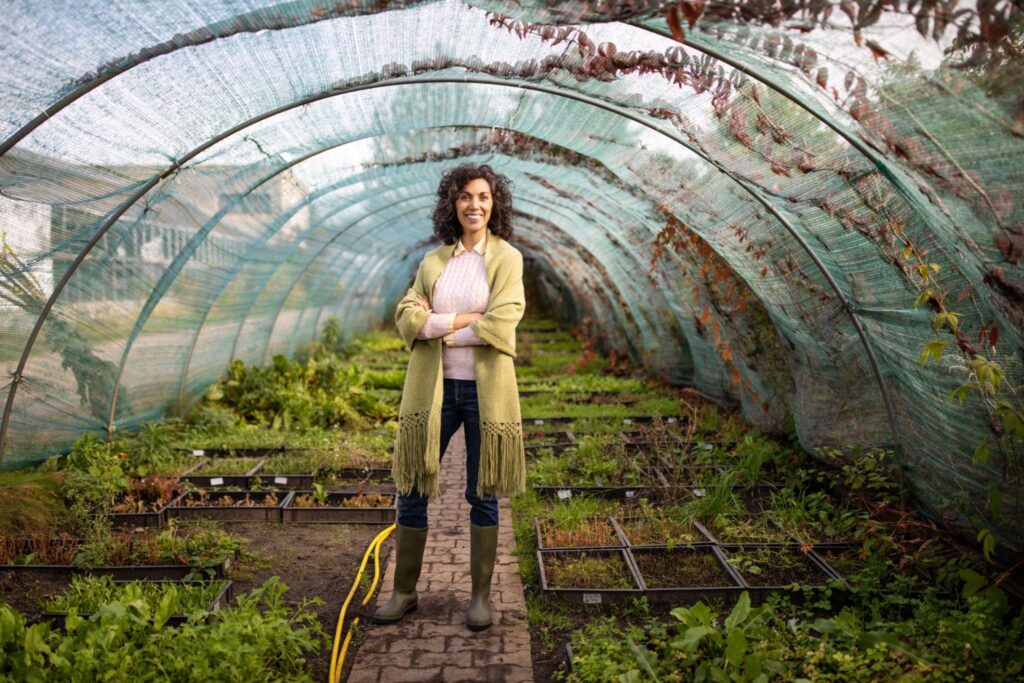Hydroponic systems do not use soil to grow crops. Instead, they use a medium that contains the necessary nutrients and water. The roots of the plants are submerged in this liquid and let the plants grow. This is not simple as it seems. Now, these Hydroponic systems are used commercially. Commercial Vertical Hydroponic Systems are used worldwide.
Types of Hydroponic Systems
Generally, there are seven types of Hydroponic systems. In all these types, the principle is the same but uses different methods to apply the principle. Each type has advantages and disadvantages.
Wicking Systems
This is the most basic type of hydroponic method and requires no electricity, pumps, or diffusers. The plants are kept in coir or perlite. Below the plants, there is a reservoir containing the solution containing water and nutrition. Few wicks connect the plant roots and the solution. These wicks transport the water and nutrients to the roots. This method is suitable for small plants and is mostly used in households.
Nutrient Film Technique (NFT)
In Nutrient Film Technique, the plants are fixed to a structure and the structure is holding the plants vertically. The roots are naked and exposed to the air. The roots are partially( About 10 percent of the roots) dipped in a canal of the solution containing necessary nutrients and water. The canal is connected to a large reservoir, where the solution is circulating through the canal from a water pump.
This method is safe because the roots can breathe and the risk of suffocating is very low. The wastage of water is minimum because the same water is circulating throughout the process.
A malfunction in the water pump can ruin the crops. The roots can overgrow and clog the canals and pipes. Therefore, Constant monitoring is required in this method.
Deep Water Culture (DWC)
In Deep Water Culture Technique, the roots are completely submerged in the nutrient solution. The plants are suspended in a pot or a structure. At the base of the solution, there is a diffuser to supply air to the solution.
This method is less expensive and has huge results and the water wastage is minimum. Comparatively, Less monitoring is required.
Poor maintenance of this method may result in root suffocation. So, Air diffusers need to be frequently checked for malfunctions.
Ebb and Flow
Also called “flood and drain”. The plants are kept in a container and a pump fills the tank with the nutrient solution. There is a drainage outlet that allows the solution to drain slowly. The pump works with a timer and it will fill the container several times a day.
Draining the solution allows the roots to breathe air and absorb oxygen. Water wastage is minimum because the same solution is circulated.
This method requires constant monitoring
Drip Systems
This is similar to NFT. The nutrient solution is dripped from a reservoir onto plants at a constant rate. Excess solution is drained again into the reservoir and circulated again. This is widely used in commercial systems.
Constant monitoring is required for this method. pH must be maintained properly in this method.
We have an article about vertical agriculture, Read it here
Commercial Vertical Hydroponic Systems
In vertical hydroponics, a technique similar to a drip system is used. The plants are grown in towers in vertical hydroponic systems. A solution reservoir at the bottom of the tower is connected to a pump and this pump delivers the solution to the crops in the tower. Then gravity will drain the excess solution back into the reservoir. This method is used commercially on large scale.
Commercial Vertical Hydroponic systems allow a high density yield per unit area. This allows year around production inside a warehouse with artificial lights. It often can provide more than 90 percent efficiency in water use. There is no risk of soil diseases for the plants.
Advantages of Commercial Vertical Hydroponic Systems
Cold climates with shorter day lengths slow down the growing time and in some cases, it stops and plants die. Most commercial vertical hydroponic systems are used inside large warehouses with artificial lighting. This allows longer growing seasons.
Hydroponics techniques have proven to result in faster growing and high yielding per plant. This is due to efficient nutrient and oxygen supply and a carefully controlled environment. These optimum conditions allow the plants to give a large harvest.
Vertical systems allow many plants to grow within a square meter. This reduces the space per yield. This allows making use of the space maximum.
These Commercial Vertical Hydroponics Systems can be implemented anywhere regardless of the climate. and reduces pest and weed problems making it not to use toxic chemicals that are harmful to health.
Disadvantages of Commercial Vertical Hydroponic Systems
The main disadvantage is it is very expensive to start. The advanced pieces of equipment need a lot of investment. These systems are completely dependent on electricity. Therefore, the electricity cost is high as well as if a power outage happens, the whole system will be compromised.
Commercial Vertical Hydroponic Systems require advanced knowledge and contact monitoring. To maintain the optimal growing environment, it requires constant monitoring of lights, temperature, and many aspects of the nutrient solution such as pH and electrical conductivity. So, the nutrient solution also needs to be recycled regularly, and the equipment parts should be supervised for clogging and blocks.
The Bottom Line
The Wicking system, Deep Water Culture and Nutrient Film techniques are comparatively need low investment to start and need low maintenance and monitoring. These techniques are best for beginners.
The ebb and flow method can provide a very high yield compared to other techniques. however, this method require a very high investment and constant monitoring and maintenance.
Overall, commercial vertical hydroponic systems can give a solution for cold climate locations and can maintain the plant growth throughout the year.


